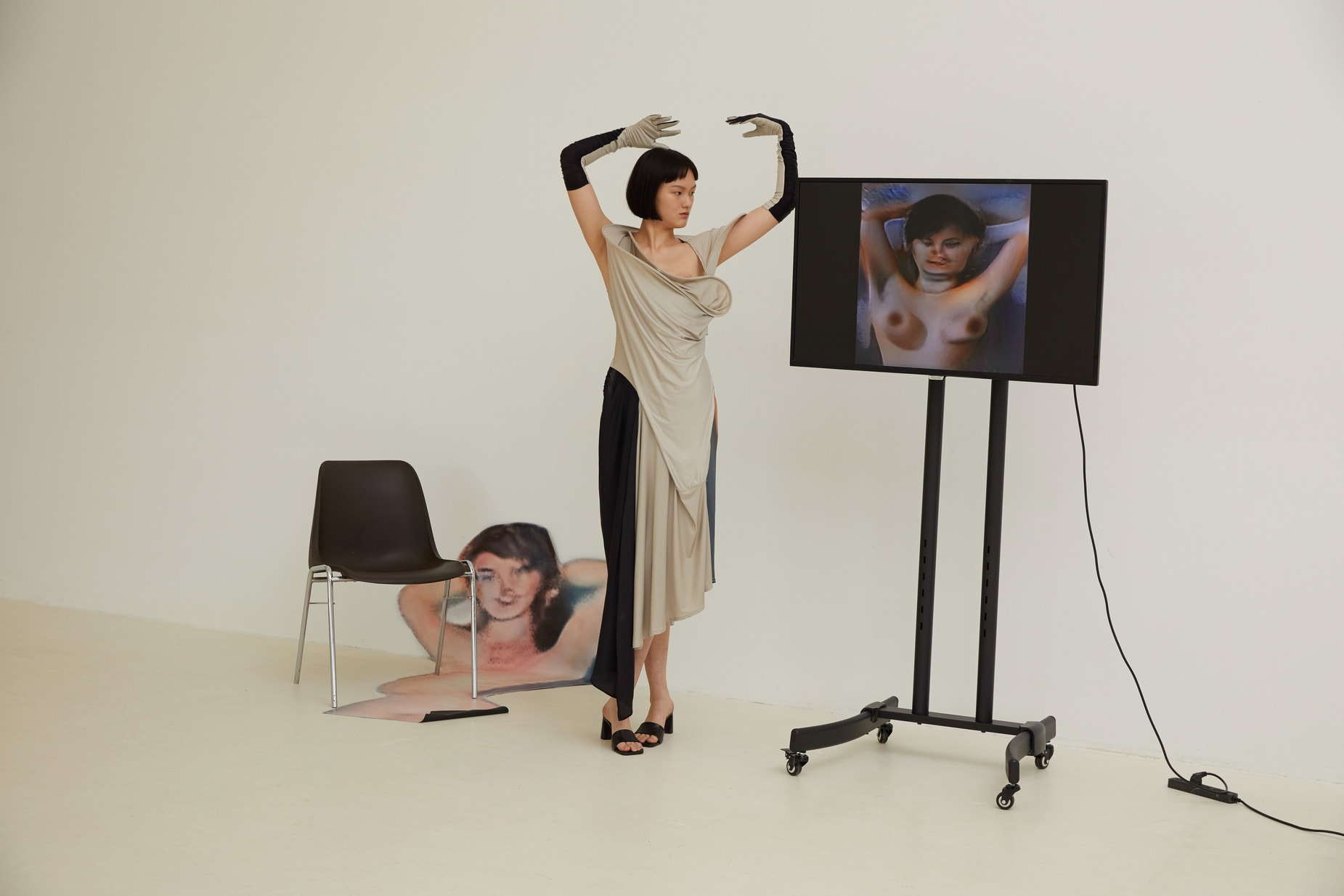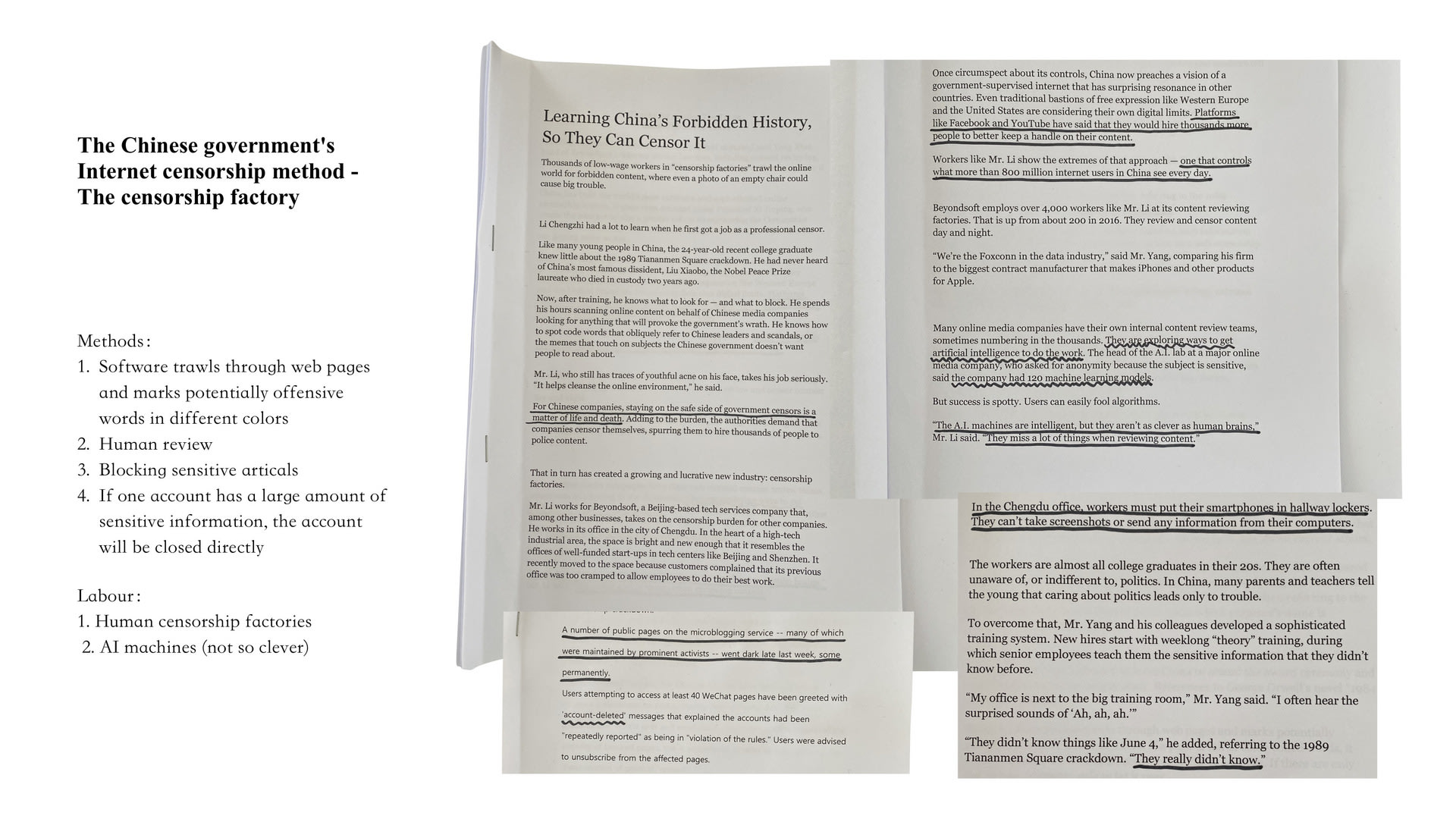Jiangyue He is a womenswear designer from China. She aims to arouse the audience's attention and reflection on some social phenomena in reality by combining physical fashion and digital fashion. Jiangyue focuses on the problems faced by women in different work conditions. She hopes to challenge the audience's traditional perception of garments within existing markets.
In the digital age, artificial intelligence is widely used in the review of network information. Through the process of machine learning images, Jiangyue wants to let the audience see: where is female nudity most severely scrutinized in the eyes of AI? Are these places different from what we thought they would be?
As human beings, we can reflect on whether it is reasonable and necessary for us to censor women's bodies in movies, the Internet and normal life. Can there be a new definition of female’s nudity?







![[untitled]](https://res.cloudinary.com/rca2020/image/upload/f_auto,h_1080,w_1920,c_fill,g_auto,q_auto/v1/rca2021/60cc0c6998de755bbfc12c2d-493354?_a=AXAH4S10)
![[untitled]](https://res.cloudinary.com/rca2020/image/upload/f_auto,h_1080,w_1920,c_fill,g_auto,q_auto/v1/rca2021/60cc0c6998de755bbfc12c2d-253022?_a=AXAH4S10)

![[untitled]](https://res.cloudinary.com/rca2020/image/upload/f_auto,h_1080,w_1920,c_fill,g_auto,q_auto/v1/rca2021/60cc267498de755bbfcbcf52-200728?_a=AXAH4S10)
![[untitled]](https://res.cloudinary.com/rca2020/image/upload/f_auto,h_1080,w_1920,c_fill,g_auto,q_auto/v1/rca2021/60cc267498de755bbfcbcf52-209021?_a=AXAH4S10)
![[untitled]](https://res.cloudinary.com/rca2020/image/upload/f_auto,h_1080,w_1920,c_fill,g_auto,q_auto/v1/rca2021/60cc267498de755bbfcbcf52-224141?_a=AXAH4S10)


![[untitled]](https://res.cloudinary.com/rca2020/image/upload/f_auto,h_1080,w_1920,c_fill,g_auto,q_auto/v1/rca2021/60cc267498de755bbfcbcf52-639018?_a=AXAH4S10)
![[untitled]](https://res.cloudinary.com/rca2020/image/upload/f_auto,h_1080,w_1920,c_fill,g_auto,q_auto/v1/rca2021/60cc267498de755bbfcbcf52-649698?_a=AXAH4S10)
![[untitled]](https://res.cloudinary.com/rca2020/image/upload/f_auto,h_1080,w_1920,c_fill,g_auto,q_auto/v1/rca2021/60cc267498de755bbfcbcf52-568737?_a=AXAH4S10)
![[untitled]](https://res.cloudinary.com/rca2020/image/upload/f_auto,h_1080,w_1920,c_fill,g_auto,q_auto/v1/rca2021/60cc267498de755bbfcbcf52-581501?_a=AXAH4S10)